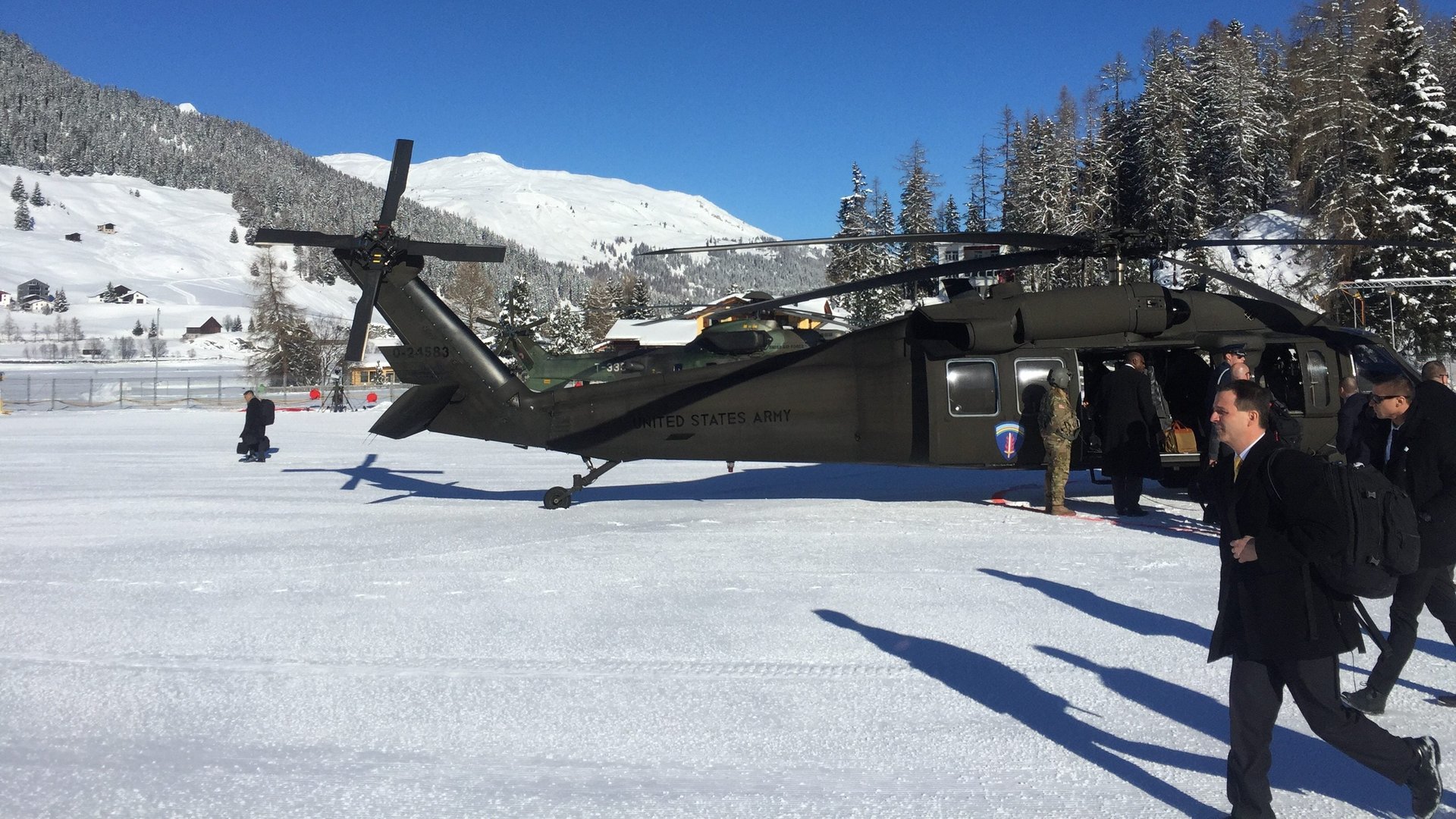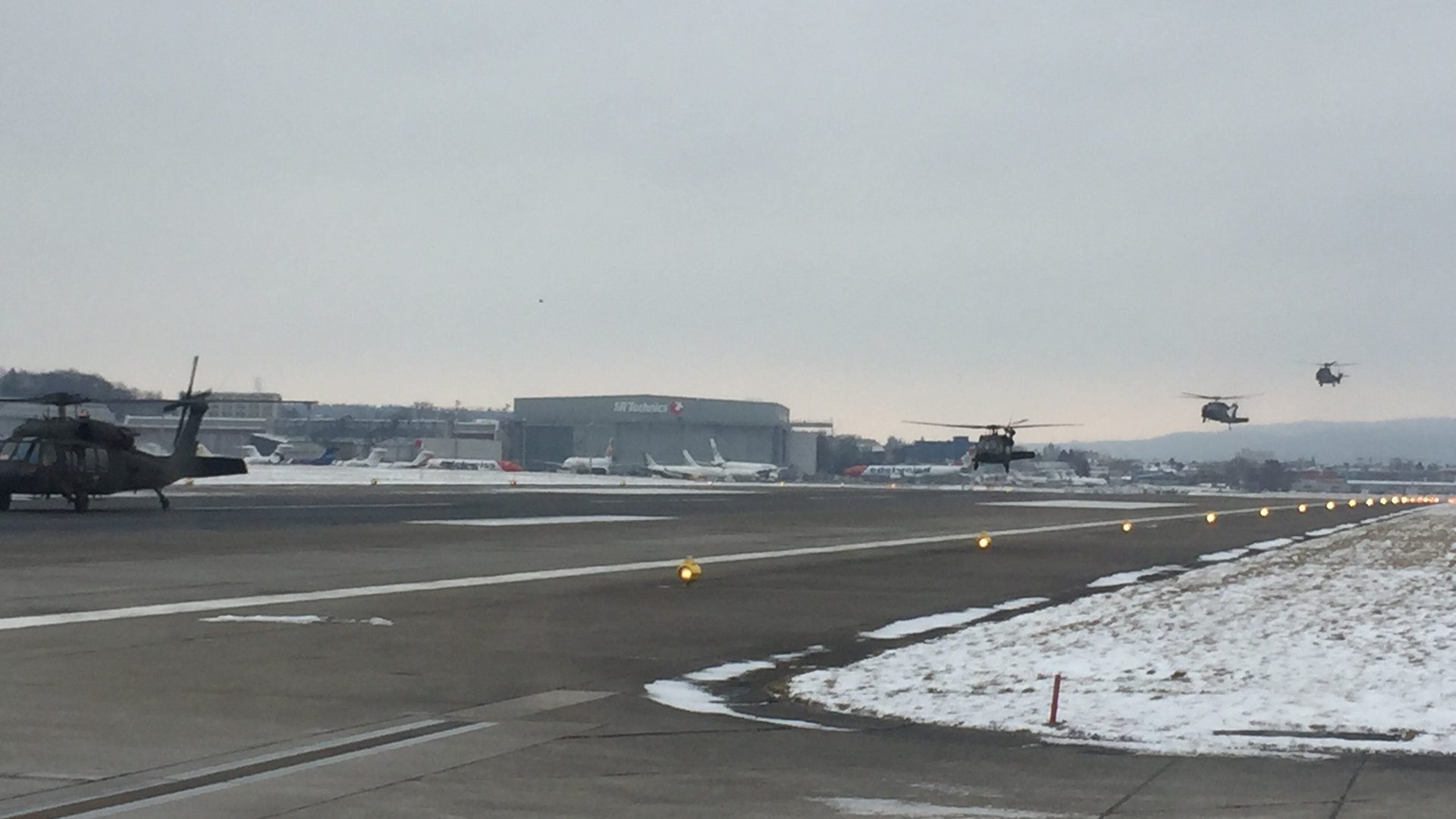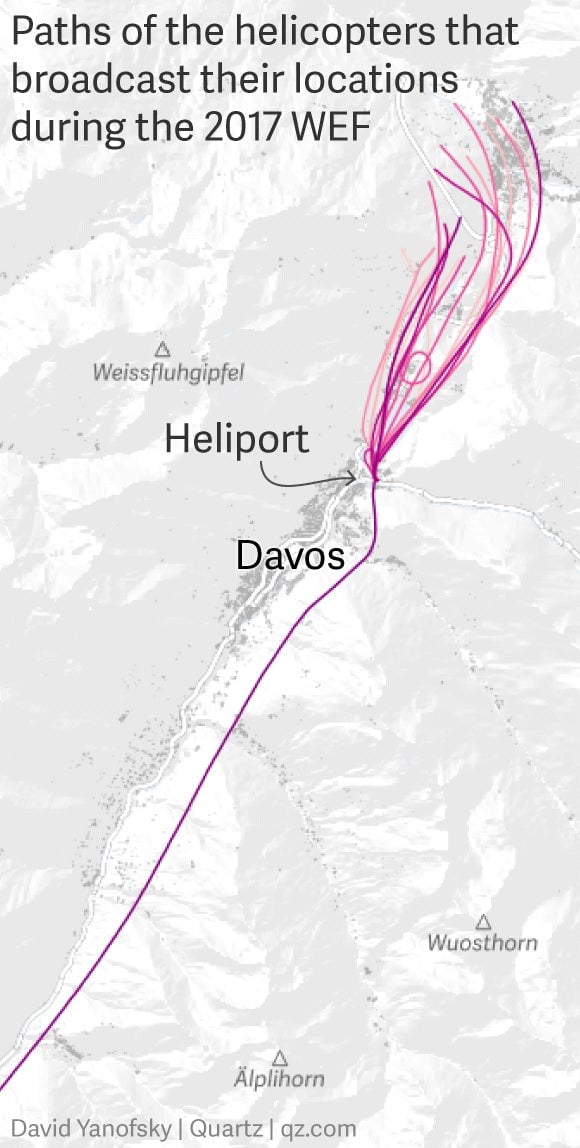The global populist backlash didn’t ground the private helicopters flying into Davos
Amid a populist upheaval and growing anti-establishment fervor, the gathering of the global elite in Davos this year was expected to be a more sober, soul-searching affair. But judging from helicopter traffic into the posh Swiss ski resort last week, Davos bigwigs aren’t in a mood to skimp. When it came to showing greater thrift or saving a couple hours of travel time from Zurich, many chose the latter.


Amid a populist upheaval and growing anti-establishment fervor, the gathering of the global elite in Davos this year was expected to be a more sober, soul-searching affair. But judging from helicopter traffic into the posh Swiss ski resort last week, Davos bigwigs aren’t in a mood to skimp. When it came to showing greater thrift or saving a couple hours of travel time from Zurich, many chose the latter.
An analysis by Quartz identified just one fewer helicopter operation in Davos during the World Economic Forum in 2017 than the year before. We tracked 84 helicopter operations into the village heliport this year using a custom-built antenna and computer, down from the 85 we tracked using the same system last year.
The difference is within the range of fluctuation that could be attributed to our methodology. Click here for details about our rig.
We excluded government, military, and rescue helicopters for the purposes of our analysis, but our system did pick up the five-copter squadron then-US vice president Joe Biden flew out on after delivering a strongly worded speech on the second day of the forum.

Bad weather prevented Biden from taking helicopters into Davos, so instead of a 40-minute trip by air from Zurich, it took more than three hours for the vice president to slum it by motorcade, according to the pool report. (“For security reasons, the Swiss government would not allow the VP his much loved train option,” the report notes.)
Biden’s departing helo-cade included a US Army Blackhawk, Swiss Air Force Super Puma, two Swiss Air Force Cougars, and a Swiss Air Force EC635. From Zurich, he took Air Force Two back to the US, where, two days later in Washington, he passed the power of his office to Mike Pence, Donald Trump’s running mate.

We were able to identify signals from helicopters by cross-referencing an aircraft’s unique broadcast identifier against the government aircraft registries. Operations were determined by segregating groups of broadcasts that went silent for at least five minutes. Radio silence indicates that the craft is either turned off or out of range.
Despite fewer overall flights, there were three more unique types of helicopters used this year than last—17 vs. 14. They included models from Airbus Helicopter (formerly Eurocopter), Bell, AgustaWestland, and Robinson.
David Yanofsky reported from San Francisco and Jason Karaian from Davos.